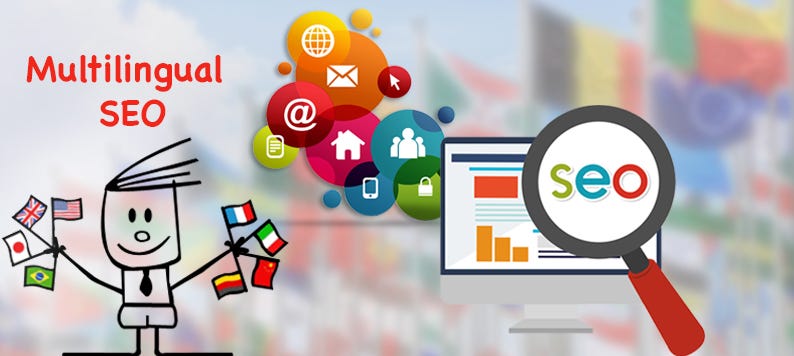
Multilingual SEO Services: Unveiling the Power of SEO Localization
In today's interconnected world, businesses are constantly striving to expand their reach and tap into global markets. This endeavor often involves creating multilingual websites to cater to diverse audiences. However, merely translating content is not enough to succeed in the competitive digital landscape. To truly thrive in international markets, one needs to embrace the power of Multilingual SEO services, including the crucial aspect known as SEO Localization.
Understanding Multilingual SEO
The Foundation of Global Visibility
Multilingual SEO is the practice of optimizing a website's content to make it accessible and appealing to users across different languages and regions. It goes beyond translation, focusing on various elements that can significantly impact a website's search engine rankings and user experience.
The Role of Keywords
Keywords lie at the heart of any SEO strategy, and multilingual SEO is no exception. It involves extensive keyword research for each target language, considering local dialects, nuances, and cultural references. These keywords are strategically integrated into the content to enhance visibility.
Technical Considerations
Multilingual websites require meticulous technical setup. This includes hreflang tags, which inform search engines about the language and geographical targeting of each page. Proper structuring ensures that users are directed to the correct language versions of your site.
The Essence of SEO Localization
Beyond Translation
SEO Localization delves deeper into the cultural and linguistic aspects of your target audience. It's not merely about translating content but adapting it to suit the preferences, customs, and sensitivities of each region.
Cultural Sensitivity
To resonate with a global audience, it's essential to understand the cultural nuances of your target markets. This means using appropriate imagery, idiomatic expressions, and cultural references that locals can relate to.
User Experience
A key element of SEO Localization is providing an exceptional user experience. This involves optimizing website design, navigation, and functionality to align with the preferences of users from different regions.
The Benefits of Multilingual SEO Services
Enhanced Visibility
By implementing multilingual SEO strategies, your website becomes more visible to a wider audience. This increased visibility can lead to higher organic traffic and, consequently, more potential customers.
Improved User Engagement
SEO Localization fosters a deeper connection with your audience. When users feel that a website speaks their language, both literally and figuratively, they are more likely to engage with its content and offerings.
Global Brand Expansion
Multilingual SEO services pave the way for global brand expansion. They allow you to tap into new markets and establish a strong online presence worldwide.
Implementing Multilingual SEO
Steps to Success
To harness the power of multilingual SEO, follow these steps:
1. **Comprehensive Keyword Research**: Identify relevant keywords in each target language.
2. **Quality Content Creation**: Produce high-quality, culturally sensitive content.
3. **Technical Optimization**: Implement hreflang tags and optimize website structure.
4. **Localized User Experience**: Tailor the user experience for different regions.
5. **Monitoring and Adaptation**: Continuously monitor performance and adapt strategies as needed.
Conclusion
In the digital age, Multilingual SEO services, with a focus on SEO Localization, have become indispensable for businesses aiming to expand globally. By speaking the language of your target audience, both linguistically and culturally, you can achieve higher visibility, engagement, and success in international markets.
FAQs
FAQ 1: What is the difference between Multilingual SEO and SEO Localization?
Multilingual SEO involves optimizing content for different languages, while SEO Localization goes further by considering cultural and regional aspects to create a truly tailored user experience.
FAQ 2: Why is cultural sensitivity important in SEO Localization?
Cultural sensitivity ensures that your content resonates with the local audience, making them more likely to engage with your website and offerings.
FAQ 3: Can SEO Localization be applied to e-commerce websites?
Absolutely. SEO Localization can significantly boost the international reach of e-commerce businesses by tailoring the shopping experience to the preferences of different regions.
FAQ 4: How long does it take to see results from Multilingual SEO efforts?
The timeline for seeing results can vary, but with a well-executed strategy, you can expect to see improvements in organic traffic and rankings within a few months.
FAQ 5: Is Multilingual SEO a one-time effort, or does it require ongoing maintenance?
Multilingual SEO is an ongoing process. To maintain and improve your global online presence, continuous monitoring, adaptation, and content updates are essential.
